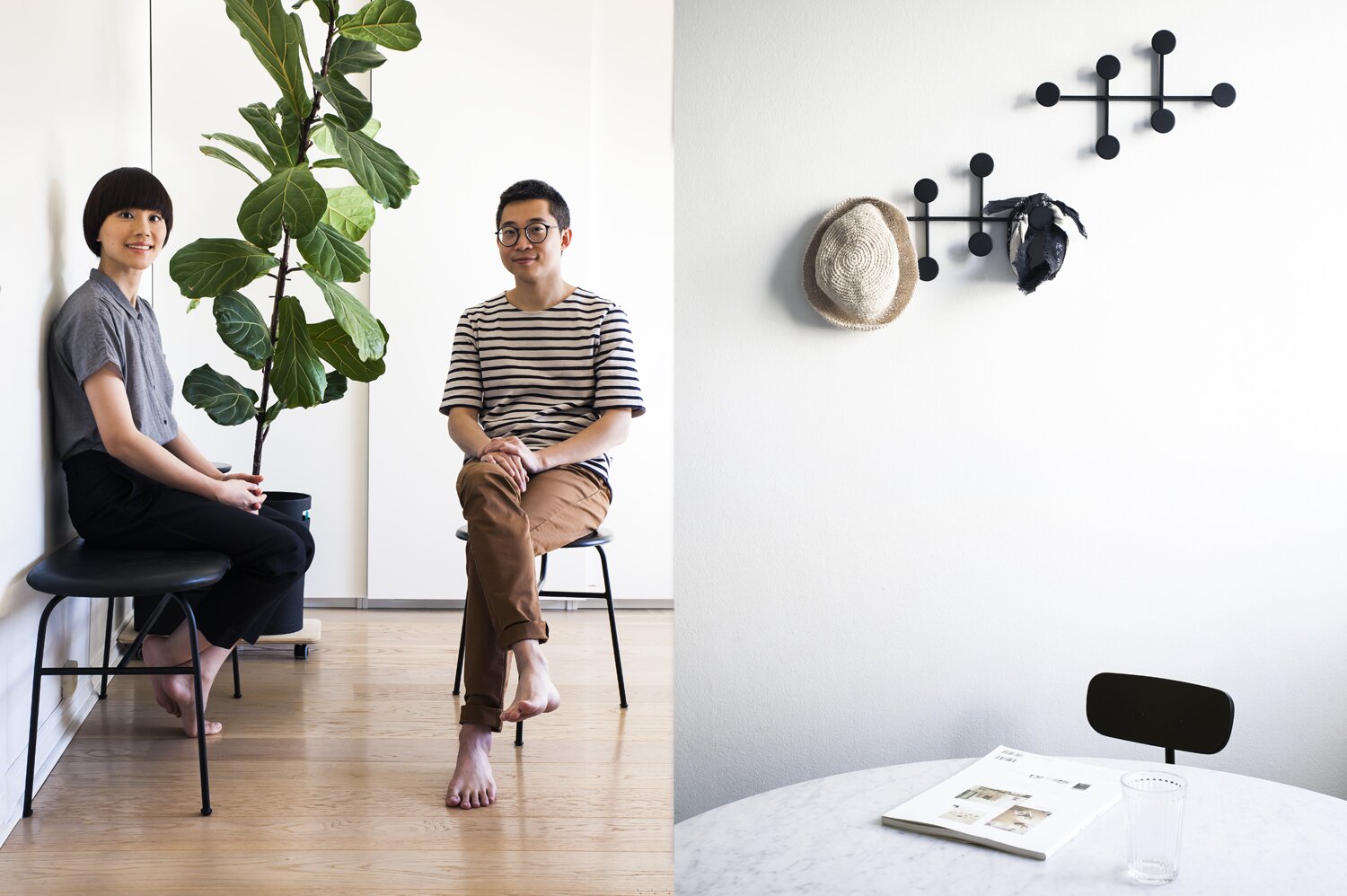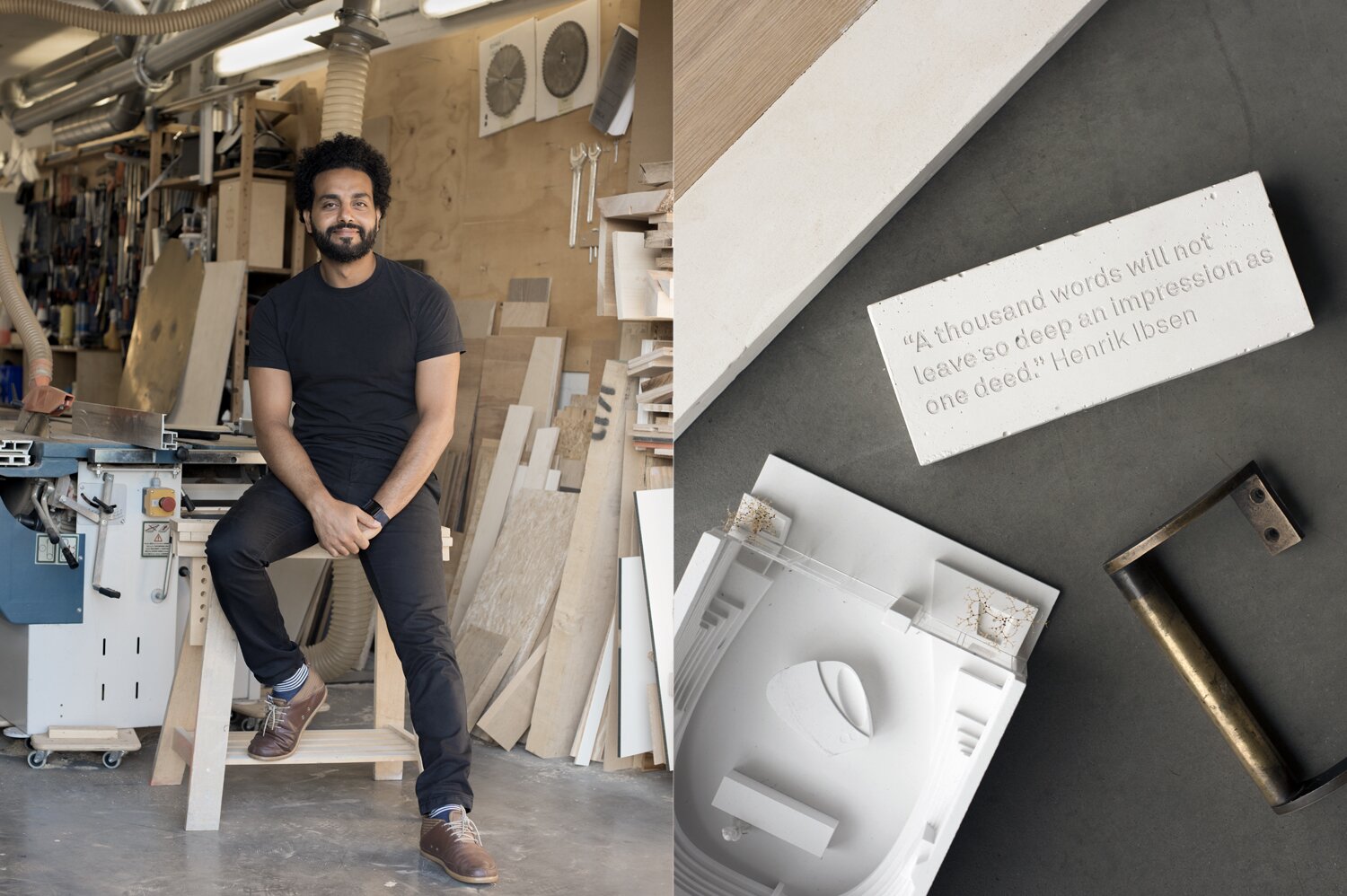Falling in love, a new job, starting a degree – the serendipitous reasons that take us to a new country are deeply intertwined with our own life stories. Here we meet creatives in the design field who moved to Denmark, Sweden, Norway and Finland from around the world. They help make their cities – and their disciplines – a more dynamic place for it. They stayed for the saunas, the fleeting summers and that special something that makes people find their place in the Nordic world.
HUNG-MING CHEN AND CHEN-YEN WEI
Founders, designers Afteroom
Stockholm, Sweden
Where are you from?
Both of us grew up in Taiwan, where all the essences of East Asia merge.
When and why did you come to Sweden?
We moved to Stockholm in 2006 for Hung-Ming to complete his master’s degree in design. As a newlywed couple, we just took it as a two-year honeymoon and never expected to stay as long as we have. We were quite naïve before we came here, which was probably a good thing.
What made you stay?
We love living in a city connected closely with nature, and Stockholm was the perfect choice. After a few years of adapting to our new surroundings and pursuing our entrepreneurial dreams, we had our daughter. The journey just happened naturally, which encouraged us to stay.
Was it difficult to adjust culturally?
Since we have each other’s full support, we don’t see it as difficult. Also, we live in an era where access to information is so easily available. Even though we keep reminding ourselves to live with an open mind and stay flexible, we know there are culturally ingrained habits and preferences from our backgrounds that will always be with us.
How does Scandinavia compare to where you’re from?
Taiwan is a warm island. Summers there are too hot and humid to be outside unless you’re playing in the water. A cold snap of around 10°C doesn’t last long. People in Taiwan like to stay out of the sun. You’ll see girls carrying parasols to protect their skin. In Stockholm we now appreciate sunbathing, especially when the beautiful Scandinavian summers are so fleeting, like the cold snaps in Taiwan.
How is the design field and the visual language different in Scandinavia than in Taiwan?
The defined aesthetic of Scandinavian design has been a global phenomenon for many years. In contrast, Taiwan has a complex cultural background that is difficult to define. The design industry in Taiwan tends to put more importance on the efficient production of what’s on trend, rather than encouraging the pursuit of its own individual style.
PETER GIRGIS
Senior Interior architect
Snøhetta
Oslo, Norway
Where are you originally from?
I grew up in Kearny, New Jersey, just outside of New York. My parents are from Alexandria, Egypt.
What brought you to Norway?
I studied design in New York where I met my wife, who is from Norway. I was looking for work, specifically with Snøhetta, and became part of their New York office. Around 2004 we won the project to build the national memorial at the World Trade Center site. To be a part of something quite emotional as rebuilding was like coming full circle.
What made you stay?
It has a lot to do with the pleasure and enjoyment of where I am. Also, my parents passed away when I was young, and it’s often family and the people you know that bring you back to a place. I’ve grown to appreciate the real true potential for people to have a well-balanced life in Scandinavia. There’s an appreciation for people’s time.
Was it difficult to adjust culturally?
Sometimes the most difficult thing is wanting to feel that you belong somewhere, especially when you look like an outsider. The first step is wanting to learn to speak the language, even though it’s not going to be perfect – however funny it sounds, no matter the mistakes.
How does living in Oslo compare to where you’re from?
In New York things are quite effective and efficient, but inside of you there’s a little bit of a demand. We’re talking about a city of nearly ten million people compared to a city of 600,000 people. In Oslo it’s well-balanced, small city living. I find that quite beautiful and rewarding.
How would you describe the design field and the visual language in Scandinavia?
Being part of a broad, international group at Snøhetta, sometimes it can be a social democratic approach or a smooth, clean approach, a very environmental approach or modernistic simplistic approach, but from an international perspective.
LUCA NICHETTO
Founder, Multidisciplinary designer
Nichetto Studio
Stockholm, Sweden
Where are you from?
I’m from Venice, Italy.
When and why did you move to Stockholm?
Six years ago my wife, who is a tailor, received a job offer in Stockholm. Having the kind of job I can do wherever I want, I said to her, “Let’s both move to Sweden
and I’ll go back and forth.” Then last year I became a father. So I’m busy here
in Stockholm.
Was it difficult to adjust culturally?
Not in the beginning. There were so many things that worked perfectly here compared with Italy. Then I started to see things that are very different from my culture. In Scandinavia they schedule everything. For me to have a spontaneous date with a friend is the best. If I want to hang out and go for a beer today,
I’d really like to hang out today.
How does working in Scandinavia compare with Italy?
The biggest difference is how slow the design process is in Scandinavia. The hierarchy here is not like a pyramid. It’s much more flat. The boss is part of the team and needs to listen to everyone. And that creates a system with a lot of meetings and a really long decision-making process.
How is the design field and the visual language different in Scandinavia than in Italy?
Scandinavian design is not so much into taking risks. In Italy it’s like a drug for the design scene. In the last ten years the new wave of Scandinavian design is, in my opinion, an evolution of what IKEA did, but in a more niche way. You see pastel colours everywhere, it’s kind of a hipster movement in design.
What is your favorite part of living in Stockholm?
It’s the perfect place for having a family. While you have high taxes, you receive everything back in services. That is totally different from Italy, where you still have high taxes but you receive almost nothing from the state.

